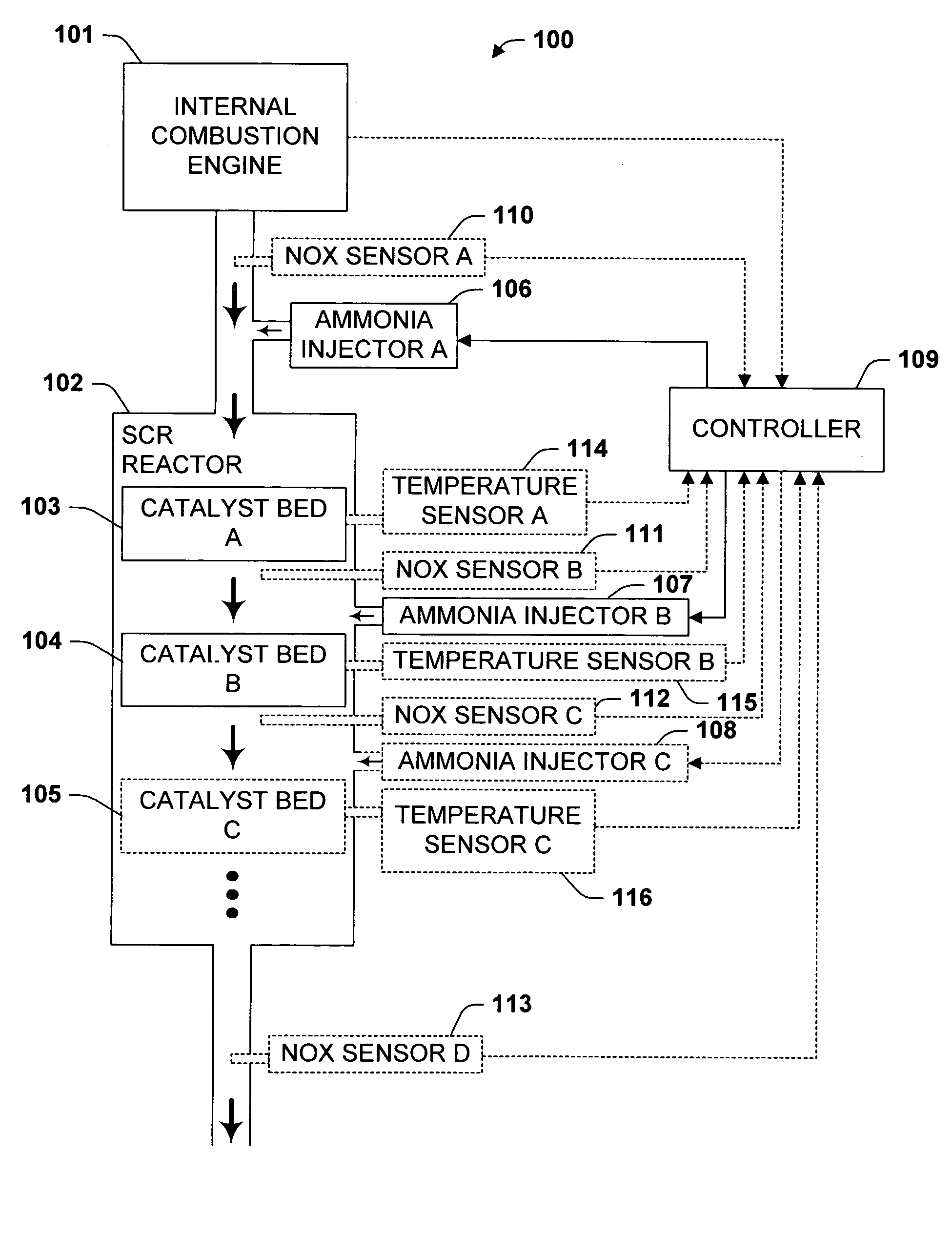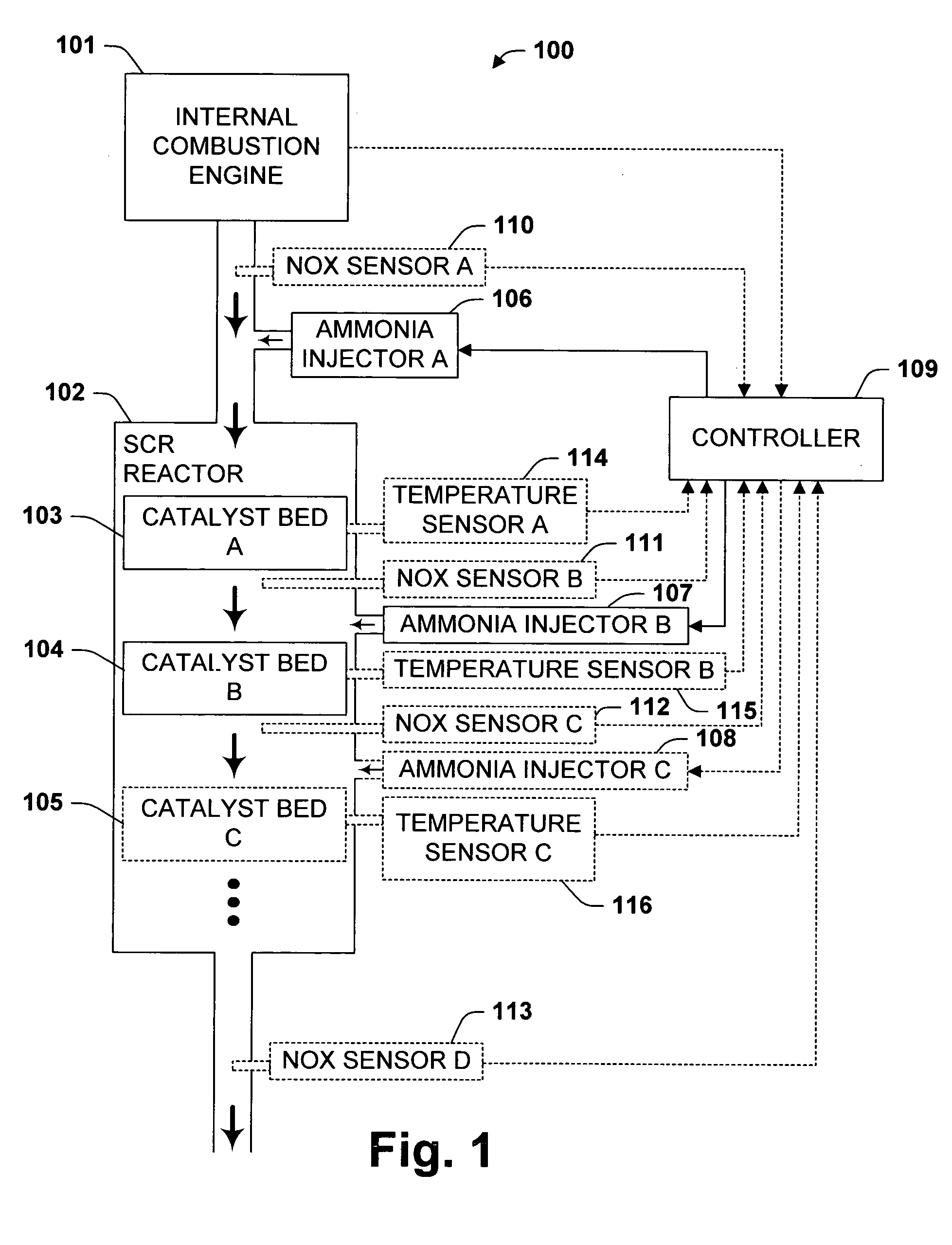Multistage reductant injection strategy for slipless, high efficiency selective catalytic reduction
a technology of selective catalytic reduction and reductant injection, which is applied in the direction of engines, machines/engines, mechanical equipment, etc., can solve the problems of excessive meeting effort, exhaust is too oxygen-rich for three-way catalysts to be effective, and the emission of internal combustion engines. achieves the effect of improving the control of nox reduction and reducing the risk of ammonia slip
- Summary
- Abstract
- Description
- Claims
- Application Information
AI Technical Summary
Benefits of technology
Problems solved by technology
Method used
Image
Examples
Embodiment Construction
[0024]FIG. 1 is a schematic illustration of an exemplary vehicle 100 according to one aspect of the present invention. The vehicle 100 comprises an internal combustion engine 101, SCR reactor 102, and a controller 109. The SCR reactor 102 comprises at least two catalysts beds, catalyst bed A 103 and catalyst bed B 104. The vehicle also comprises at least two ammonia injectors, ammonia injector A 106 and ammonia injector B 107. The SCR reactor 102 optionally comprises additional catalyst beds and ammonia injectors, such as a catalyst bed C 105 and an ammonia injector C 108. The ammonia injectors 106-108 are positioned upstream of the SCR reactor 102 and between each adjacent pair of catalyst beds 103-105. The controller 109 controls the ammonia injection rates using data that can include, without limitation, data relating to the operation of internal combustion engine 101, data from one or more NOX sensors 110-113, and / or data from one or more temperature sensors 114-116.
[0025] The ...
PUM
 Login to View More
Login to View More Abstract
Description
Claims
Application Information
 Login to View More
Login to View More - R&D
- Intellectual Property
- Life Sciences
- Materials
- Tech Scout
- Unparalleled Data Quality
- Higher Quality Content
- 60% Fewer Hallucinations
Browse by: Latest US Patents, China's latest patents, Technical Efficacy Thesaurus, Application Domain, Technology Topic, Popular Technical Reports.
© 2025 PatSnap. All rights reserved.Legal|Privacy policy|Modern Slavery Act Transparency Statement|Sitemap|About US| Contact US: help@patsnap.com



